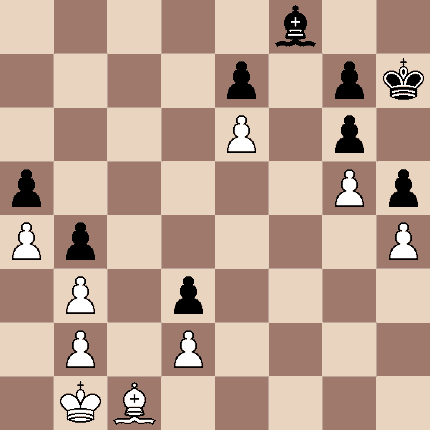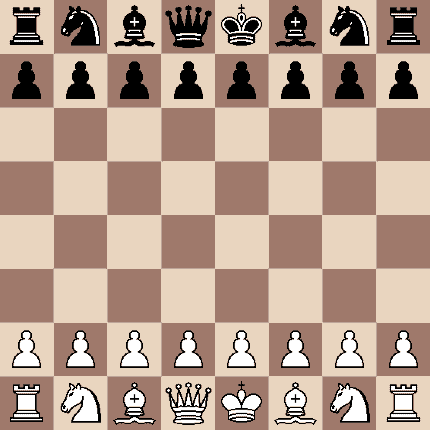Forced draw in Chess, or forced (infinite) move cycle
Alec Jacobson
December 24, 2010
I have been pondering for a while whether it is possible to fall into a position during a game of chess from both players are forced to make them same moves over and over again. In Article 5 section 2 of the World Chess Federation's "Laws of Chess" a game is drawn under five circumstances:
a. The game is drawn when the player to move has no legal move and his king is not in check. The game is said to end in ‘stalemate’. This immediately ends the game, provided that the move producing the stalemate position was legal.
b. The game is drawn when a position has arisen in which neither player can checkmate the opponent’s king with any series of legal moves. The game is said to end in a ‘dead position’. This immediately ends the game, provided that the move producing the position was legal. (See Article 9.6)
c. The game is drawn upon agreement between the two players during the game. This immediately ends the game. (See Article 9.1)
d. The game may be drawn if any identical position is about to appear or has appeared on the chessboard at least three times. (See Article 9.2)
e. The game may be drawn if each player has made at least the last 50 consecutive moves without the movement of any pawn and without any capture. (See Article 9.3)
So my goal is to find positions in chess in which the players end up inevitably falling working toward circumstance d or e.
These are surprisingly hard to come up with: it's very hard to create an arrangement of the pieces such that both opponents' moves are forced.
Today I came up with a situation where both players can move only their kings and only to two different squares, thus creating a situation where draw circumstance d must occur.
Here's the position that forces this draw:
 And here's an animation of one possible game that could lead up to this arrangement and the inevitable forced draw:
And here's an animation of one possible game that could lead up to this arrangement and the inevitable forced draw:
 Download the (PGN) game file
Download the (PGN) game file And here's an animation of one possible game that could lead up to this arrangement and the inevitable forced draw:
And here's an animation of one possible game that could lead up to this arrangement and the inevitable forced draw:
 Download the (PGN) game file
Download the (PGN) game file